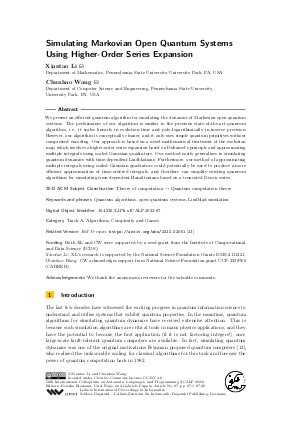LIPIcs.ICALP.2023.87.pdf
- Filesize: 0.67 MB
- 20 pages

 Creative Commons Attribution 4.0 International license
Creative Commons Attribution 4.0 International license
























Feedback for Dagstuhl Publishing